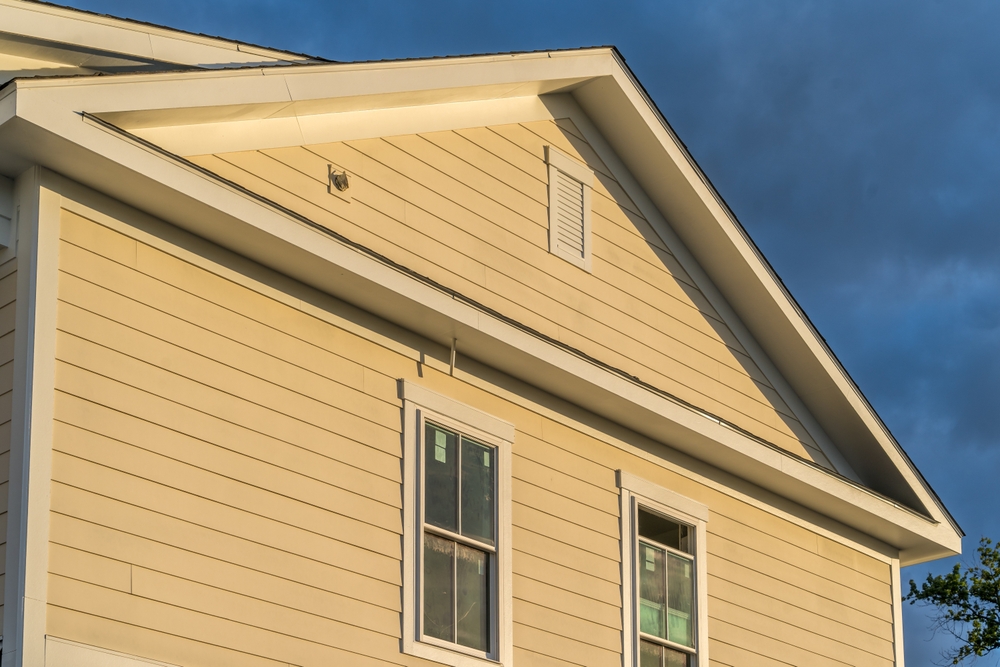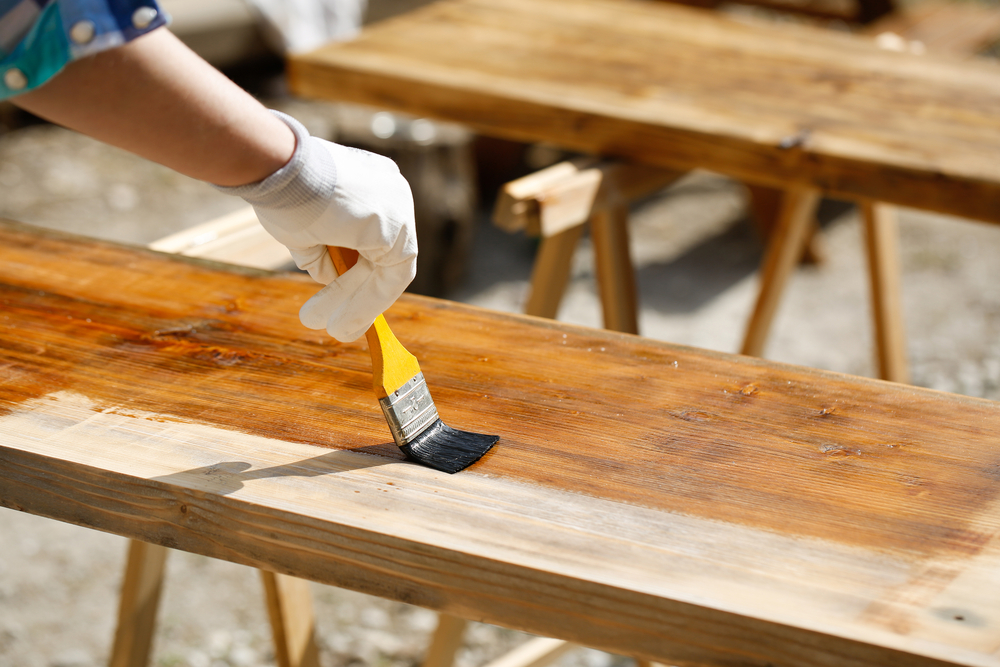Choosing the right exterior paint color is one of the most important decisions you’ll make for your home’s curb appeal and resale value. After 12 years helping homeowners select colors that stand the test of time, I’ve seen Benjamin Moore consistently deliver the most durable and beautiful exterior finishes. Here are my top picks for Benjamin Moore exterior colors that will define home exteriors in 2025.
Why Benjamin Moore for Exteriors?
Benjamin Moore’s exterior paints offer superior fade resistance, weather protection, and color retention. Their Aura Exterior and Regal Select Exterior lines provide excellent coverage and durability that protects your investment for years to come.
The key difference with Benjamin Moore is their advanced Color Lock technology, which binds pigments more effectively than standard paints. This means your exterior colors will look fresh and vibrant for 7-10 years instead of fading after just 3-4 years with cheaper alternatives.
My Top 10 Benjamin Moore Exterior Colors for 2025
1. White Dove (OC-17)
The gold standard for white exteriors. This warm, creamy white works on every architectural style and never looks stark or clinical.
Why it’s perfect: Warm enough to feel inviting, clean enough to feel fresh
Best for: Colonial, farmhouse, Cape Cod, modern styles
Trim pairing: Same color or Chantilly Lace (OC-65) for subtle contrast
Shutters: Hale Navy (HC-154) or Hunter Green (2041-10)
Resale impact: Adds 3-5% to home value in most markets
2. Hale Navy (HC-154)
This sophisticated navy has become the most requested bold exterior color. It’s classic enough to be timeless yet bold enough to make a statement.
Why it works: Rich, sophisticated, and pairs with any accent color
Best for: Traditional, colonial, shingle-style homes
Trim pairing: White Dove (OC-17) or Cloud White (OC-130)
Front door: Natural wood, brass hardware, or matching navy
Style note: Particularly stunning on homes with white trim and natural landscaping
3. Revere Pewter (HC-172)
The most popular greige translates beautifully to exteriors, offering sophistication without being too bold or too bland.
Why it’s versatile: Works with both warm and cool accent colors
Best for: Contemporary, transitional, craftsman styles
Trim pairing: White Dove (OC-17) or Moonshine (OC-142)
Roof compatibility: Works with gray, brown, or black roofing
Landscape pairing: Complements both formal and natural garden styles
4. Kendall Charcoal (HC-166)
A rich, sophisticated charcoal that’s become increasingly popular for its dramatic yet timeless appeal.
Why it’s trending: Bold enough to stand out, classic enough to last
Best for: Modern, contemporary, industrial styles
Trim pairing: Cloud White (OC-130) for striking contrast
Caution: Requires excellent lighting and landscaping to avoid looking stark
Energy consideration: May increase cooling costs in hot climates
5. Classic Gray (OC-23)
A true, clean gray that works beautifully on exteriors without looking cold or unwelcoming.
Why it’s reliable: Neutral enough for broad appeal, interesting enough to have character
Best for: Contemporary, modern farmhouse, transitional styles
Trim pairing: White Dove (OC-17) or Chantilly Lace (OC-65)
Accent colors: Natural wood, black shutters, or colorful front doors
Maintenance: Shows dirt less than white but more than darker colors
6. Muslin (OC-12)
A warm, creamy off-white that’s perfect for traditional homes. Softer than pure white but still clean and fresh.
Why it’s timeless: Classic enough for historic homes, fresh enough for modern updates
Best for: Victorian, colonial, traditional styles
Trim pairing: Same color or slightly lighter Moonshine (OC-142)
Shutters: Deep green, navy, or classic black
Historical accuracy: Approved for many historic district renovations
7. Stonington Gray (HC-170)
A sophisticated blue-gray that brings coastal elegance to any home style.
Why it’s calming: The perfect balance of gray and blue
Best for: Coastal, Cape Cod, shingle-style homes
Trim pairing: White Dove (OC-17) or Cloud White (OC-130)
Natural pairing: Cedar shakes, natural stone, weathered wood
Regional note: Particularly popular in New England and coastal areas
8. Iron Mountain (2134-30)
A deep, rich charcoal with brown undertones that’s warmer than pure black but equally dramatic.
Why it’s sophisticated: Dramatic without being harsh
Best for: Modern, contemporary, barn-style homes
Trim pairing: Crisp white for maximum contrast
Landscape requirement: Needs good lighting and colorful plantings
Style impact: Creates a stunning backdrop for modern architecture
9. Sage Green (2142-30)
A soft, muted green that connects homes to their natural surroundings while remaining sophisticated.
Why it’s trending: Biophilic design connecting homes to nature
Best for: Craftsman, farmhouse, cottage styles
Trim pairing: Cream or warm white
Natural complement: Works beautifully with stone and wood accents
Garden harmony: Blends seamlessly with most landscape designs
10. Timber Wolf (OC-2)
A warm, complex gray-brown that shifts between gray and taupe depending on lighting.
Why it’s interesting: Complex color that changes throughout the day
Best for: Rustic, mountain, contemporary styles
Trim pairing: White Dove (OC-17) or natural wood
Setting: Particularly stunning in wooded or mountain settings
Versatility: Works with both traditional and modern design elements
2025 Exterior Color Trends
Warm Neutrals Over Cool Grays
The shift toward warmer colors includes exteriors, with greiges and warm grays replacing cool, stark grays. Homeowners are seeking colors that feel more inviting and less institutional.
Bold Navy and Deep Charcoals
Dark, sophisticated colors are gaining popularity as homeowners seek dramatic curb appeal. These colors create striking contrast with white trim and natural materials.
Nature-Inspired Colors
Sage greens, warm browns, and earth tones connect homes to their natural surroundings. This biophilic approach to color selection reflects our increasing desire to harmonize with nature.
Monochromatic Color Schemes
Using varying shades of the same color family for siding, trim, and accents creates sophisticated, cohesive looks that feel intentional and professionally designed.
Choosing Colors by Home Style
Colonial and Traditional
– Classic choices: White Dove, Muslin, Hale Navy
– Trim: White or cream
– Shutters: Deep green, navy, or black
– Historical consideration: Many colonial homes benefit from period-appropriate colors
Modern and Contemporary
– Bold choices: Kendall Charcoal, Iron Mountain, Classic Gray
– Trim: Crisp white for contrast
– Accents: Natural wood, black metal
– Clean lines: Simple color schemes emphasize architectural elements
Farmhouse and Rustic
– Warm choices: Revere Pewter, Timber Wolf, Sage Green
– Trim: Warm whites or cream
– Accents: Natural wood, stone
– Authentic feel: Colors should complement rural or countryside settings
Coastal and Cape Cod
– Classic choices: White Dove, Stonington Gray, soft blues
– Trim: White or cream
– Shutters: Navy, sage green, or weathered wood
– Weather resistance: Colors must withstand salt air and intense sun
Testing Exterior Colors
Buy sample quarts: Paint large swatches (at least 2×3 feet) directly on your home
Test on multiple sides: Colors look different in various lighting conditions
Observe at different times: See how colors look in morning, midday, and evening light
Consider surroundings: How does the color work with your roof, landscaping, and neighboring homes?
Live with it: Observe samples for at least a week before making final decisions
Get input: Ask neighbors, friends, and your HOA for feedback
Regional Considerations
Hot, Sunny Climates
– Choose lighter colors to reflect heat and reduce cooling costs
– Avoid dark colors on south-facing walls
– Consider fade-resistant formulations like Benjamin Moore’s Aura Exterior
– Light colors also help prevent thermal expansion damage
Cold, Northern Climates
– Darker colors can help absorb heat and reduce heating costs
– Choose colors that complement winter landscapes
– Consider how colors look against snow
– Ensure paint can withstand freeze-thaw cycles
Coastal Areas
– Salt air requires high-quality, fade-resistant paint
– Blues and grays complement water views
– Choose colors that won’t show salt residue
– Consider Benjamin Moore’s Aura Exterior for maximum durability
Color Combinations That Work
Classic Traditional
– Siding: White Dove (OC-17)
– Trim: Same or Chantilly Lace (OC-65)
– Shutters: Hale Navy (HC-154)
– Front door: Natural wood or Hunter Green
– Hardware: Brass or black
Modern Sophisticated
– Siding: Kendall Charcoal (HC-166)
– Trim: Cloud White (OC-130)
– Accents: Natural cedar or black metal
– Front door: Natural wood or bold accent color
– Hardware: Black or stainless steel
Warm Contemporary
– Siding: Revere Pewter (HC-172)
– Trim: White Dove (OC-17)
– Accents: Natural stone or wood
– Front door: Deep navy or forest green
– Hardware: Brass or bronze
Benjamin Moore Exterior Paint Lines
Aura Exterior
Premium option with superior color retention and fade resistance. Best for high-visibility areas and bold colors. Self-priming and offers excellent hide and coverage.
Regal Select Exterior
Excellent balance of performance and value. Great coverage and durability for most residential applications. Good choice for budget-conscious homeowners who still want quality.
ben Exterior
Budget-friendly option that still offers good protection and color retention. Suitable for rental properties or areas that will be repainted frequently.
Application Tips for Best Results
Surface preparation is critical: Clean, sand, and prime as needed. Poor prep work will cause premature failure regardless of paint quality.
Weather matters: Avoid painting in direct sun, high humidity, or extreme temperatures. Ideal conditions are 50-85°F with low humidity.
Quality tools: Use high-quality brushes and rollers designed for exterior paints. Cheap tools leave marks and reduce coverage.
Two coats minimum: Proper coverage ensures color depth and maximum durability, even with high-quality paint.
Prime when needed: Always prime bare wood, metal, or when making dramatic color changes.
Final Color Selection Tips
Start with your roof: It’s the largest color element and hardest to change
Consider resale value: Neutral colors appeal to more buyers
Think long-term: Choose colors you’ll love for 7-10 years
Get multiple opinions: Ask family, friends, and neighbors for input
Check HOA rules: Many neighborhoods have color restrictions
Consider maintenance: Some colors show dirt and wear more than others
Benjamin Moore’s exterior colors for 2025 offer sophisticated options that enhance curb appeal while providing lasting beauty and protection. Whether you choose a classic like White Dove or make a bold statement with Hale Navy, these colors will keep your home looking fresh and current for years to come.
Remember, exterior paint is an investment in your home’s value and protection. Take time to test colors properly and choose high-quality paint for the best long-term results. The extra cost of premium Benjamin Moore paint pays for itself in durability and lasting beauty.



